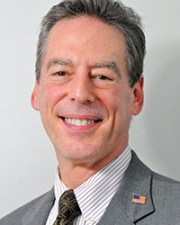
Green roofs are soaring: Turning an under used part of a building into a major asset - by Steven Schleider

Metropolitan Valuation Services
You’ve maximized your building’s energy efficiency. Retrofitted the lighting. Upgraded HVAC. Switched to green cleaning products. Have a top-notch recycling program. You’re good. You’re green. Nope.
As New Yorkers, we are disinclined to look up, but if you want to be part of the next, great green building revolution – look up to your roof.
Green roofs are gorgeous living architecture – visible, beautiful, useable and valuable to tenants and building owners alike, as well as migratory wildlife. Admittedly, green roofs are complicated, expensive and require ongoing maintenance, but they turn an ugly, underused part of a building’s real estate into a major asset. With the exception of going solar, greening a property’s roof may well be the last, grand, green frontier.
The benefits of green roofs are numerous and quite compelling. The U.S. Department of Environmental Protection (EPA) will give you in-depth information on how green roofs reduce the Urban Heat Island Effect. New York City is a vast summertime heat island with negative impact on energy, water and health. Vegetative roofs act as building insulators, reducing energy usage and the extent and cost of air conditioning and heat as well as reduce air pollution and greenhouse gasses. According to the EPA, “On hot summer days, the surface temperature of a green roof can be cooler than the air temperature, whereas the surface of a conventional rooftop can be up to 90 degrees warmer.”
Then there’s storm water management, no small issue in New York City. Green roofs help control runoff as vegetation absorbs water that, as runoff, contains a high amount of pollution and contaminants. With so much of the city’s surfaces impervious, runoff can cause sewer overflow which empties into the city’s waterways.
Green roofs can also extend roof life, reduce AC and heating costs, serve as a storm water management tool and fire retardant, reduce noise, contribute to air quality and greatly enhance a property’s marketability and value by providing viewable or useable garden and recreational space. They can also be used for sustainability points for certifications and give an owner bragging rights on their building’s green profile.
On the down side, green roofs are a costly undertaking with many complexities ranging from a building’s load capacity; usage (will it only be viewed or be used as garden space?); what part of the roof you will green (exposures will vary greatly); whether you install an intensive green roof which is thicker, deeper, heavier and supports more plants, but requires more maintenance; or extensive which is shallower, lighter and more minimal maintenance; whether you opt for a modular vegetated roof, an alternative to the built-in roof where mobility makes it easier to do roof repairs and is quicker to achieve completion (but costs somewhat more); what plants will be used; and what systems will be used for root barrier, drainage and irrigation.
You’ll need a professional engineer and registered architect to do a structural analysis to determine if your roof can sustain vegetation or needs reinforcement; an architect/landscape designer and/or green roof specialist to design and install the system; and a big budget. A decision will need to made on the type of planting and systems to be used – from relatively simple sedum and grasses to a veritable forest – that fit your budget, climate, facility and goals.
The mayor’s Office on Sustainability offers a green roof tax abatement. In 2008, New York City and State passed legislation – now available through March 15, 2018 – of $4.50 per s/f (up to $100,000 or the building’s tax liability, whichever is less). To qualify, your installation must be at least 50% of rooftop space.
Some prominent buildings in NYC that have installed green roofs include Rockefeller Center; the Empire State Building; Javits Center; Brooklyn Academy of Music; the Parks Department’s Five Borough Administrative Building on Randalls Island; Zeckendorf Towers on Union Square; the rooftop farm at the Brooklyn Navy Yard; and the New School’s LEED-Gold student center.
The largest green roof in New York City is in midtown Manhattan atop the U.S. Postal Service’s Morgan Processing and Distribution Center.
The funkiest – and award-winning – green roof includes plastic rocks, artificial boxwoods, clear crushed glass and recycled rubber mulch. It’s on top of the Museum of Modern Art and, although visible, you can’t get there from here as it’s inaccessible.
Steven Schleider, MAI, MRICS, LEED-AP BD + C, is the president of Metropolitan Valuation Services, New York, N.Y.